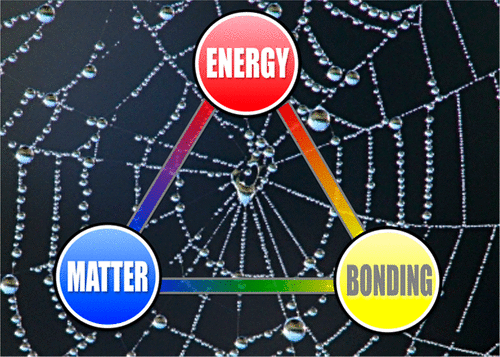当前位置:
X-MOL 学术
›
J. Chem. Educ.
›
论文详情
Our official English website, www.x-mol.net, welcomes your feedback! (Note: you will need to create a separate account there.)
A Nonlinear, “Sticky” Web of Study for Chemistry: A Graphical Curricular Tool for Teaching and Learning Chemistry Built upon the Interconnection of Core Chemical Principles
Journal of Chemical Education ( IF 3 ) Pub Date : 2018-10-18 00:00:00 , DOI: 10.1021/acs.jchemed.7b00878 James D. Martin 1 , Katherine A. Nock 2
Journal of Chemical Education ( IF 3 ) Pub Date : 2018-10-18 00:00:00 , DOI: 10.1021/acs.jchemed.7b00878 James D. Martin 1 , Katherine A. Nock 2
Affiliation

|
The National Research Council’s Framework for K–12 Science Education articulates the need to shift science curricula from being a collection of discrete facts to curricula that integrate core ideas and practices. To help teachers better integrate content and to respond to expressed frustration regarding extensive lists of standards often presented as collections of isolated topics in prescribed courses of study, we developed a web of study approach to general chemistry curricula. Instead of a traditional linear course of study for which lists of standards tend to shift teaching and learning toward coverage, the web of study approach emphasizes integration of concepts by which learners build a coherent and self-consistent body of knowledge. Using both spatial and color-coded relationships, a general chemistry course is mapped onto the triad of primary concepts, Matter–Energy–Bonding, each represented as a primary color. Subtopics, traditionally identified in bulleted lists of standards, are graphically placed and color coded with secondary colors to provide a visual representation of an entire general chemistry course. The nonlinear web of study approach offers a greater “sticking capacity”, with deep learning achieved by teacher and learner as they reflect on how any given topic, concept, or practice relates to the entire web. While providing important contexts to understand the relevance and relationships of new material being learned, this visual representation of content facilitates seeing and thinking about interrelationships, provides a framework with which to formulate logical explanations of observed phenomena, and stimulates the most fundamental process of science: asking new questions.
中文翻译:

非线性的“固定”化学学习网:基于核心化学原理相互联系的化学教学图形课程工具
国家研究委员会的K-12科学教育框架明确指出,有必要将科学课程从分散的事实集合转变为融合核心思想和实践的课程。为了帮助教师更好地整合内容,并应对由于在规定的学习课程中经常作为孤立主题的集合而提出的广泛标准列表所表现出的挫败感,我们开发了一种针对一般化学课程的学习方法网络。网络学习方法不是传统的线性学习课程,其标准列表倾向于使教学和学习向覆盖面转移,而是强调概念的整合,通过这些概念学习者可以构建连贯且自洽的知识体系。使用空间和颜色编码的关系,一门普通的化学课程被映射到三大基本概念上:物质-能量-键合,每个概念都代表一种原色。通常在子弹式标准列表中标识的子主题以图形方式放置,并用二次色进行颜色编码,以提供整个化学课程的可视化表示。非线性学习网络方法提供了更大的“粘贴能力”,教师和学习者在思考任何给定的主题,概念或实践如何与整个网络相关时,可以进行深度学习。在提供重要背景以了解所学新材料的相关性和相互关系的同时,内容的这种视觉表示方式有助于观察和思考相互关系,提供了一个框架,可用来对观察到的现象进行逻辑解释,
更新日期:2018-10-18
中文翻译:

非线性的“固定”化学学习网:基于核心化学原理相互联系的化学教学图形课程工具
国家研究委员会的K-12科学教育框架明确指出,有必要将科学课程从分散的事实集合转变为融合核心思想和实践的课程。为了帮助教师更好地整合内容,并应对由于在规定的学习课程中经常作为孤立主题的集合而提出的广泛标准列表所表现出的挫败感,我们开发了一种针对一般化学课程的学习方法网络。网络学习方法不是传统的线性学习课程,其标准列表倾向于使教学和学习向覆盖面转移,而是强调概念的整合,通过这些概念学习者可以构建连贯且自洽的知识体系。使用空间和颜色编码的关系,一门普通的化学课程被映射到三大基本概念上:物质-能量-键合,每个概念都代表一种原色。通常在子弹式标准列表中标识的子主题以图形方式放置,并用二次色进行颜色编码,以提供整个化学课程的可视化表示。非线性学习网络方法提供了更大的“粘贴能力”,教师和学习者在思考任何给定的主题,概念或实践如何与整个网络相关时,可以进行深度学习。在提供重要背景以了解所学新材料的相关性和相互关系的同时,内容的这种视觉表示方式有助于观察和思考相互关系,提供了一个框架,可用来对观察到的现象进行逻辑解释,



























 京公网安备 11010802027423号
京公网安备 11010802027423号